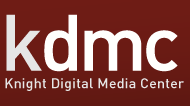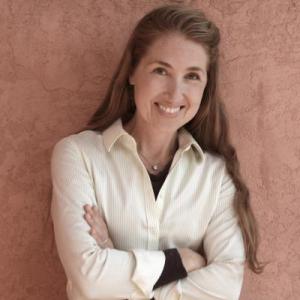By Genevive Bjorn
The digital media age serves up uncertainty as well as opportunity. One solution to the anemic job pool for science writers is to grow beyond journalism into entrepreneurship, specifically into digital publishing. Training for this kind of career growth is exactly what the Knight Digital Media Center offers in its intensive, weeklong workshop called Independent Journalist. I am the first member of NASW to graduate from this workshop in March 2011, and I was a fellow in the second-ever class. (Applications for the third annual workshop will be available online in the fall. For more information visit http://multimedia.journalism.berkeley.edu/workshops/independent.)
This workshop was created in direct response to the emerging news and information landscape, where specialty blogs and hyper local community news sites fulfill an important role. Most participants in the workshop design their sites around a specific place, and some alumni have achieved stunning success quickly, including the founders of the VoiceofSanDiego.org. In my class, I was the only participant to undertake designing a news site around a science topic, specifically, covering the five senses, based on my blog about the sense of smell (TheDailySmell.com). Turns out that science journalists are uniquely qualified to create topical communities online because we tend to gravitate toward stories based on data.“Science is filled with data that can be illustrated with visual elements that really make stories come alive, and the Independent Journalist workshop gives the fellows a better understanding of how to do it, whether it’s for community news or topical science news,” says Lanita Pace-Hinton, director of multimedia and technology programs at the Knight Digital Media Center, located on the campus of the UC Berkeley Graduate School of Journalism.
Engaging a community
The starting point for digital entrepreneurship is engagement. Specifically, this means connecting actively with an audience through a well-designed website and social media tools. Engagement builds audience and lays the foundation for making money. Every independent journalist needs an engagement strategy, which is separate from a business strategy. Both are vital to the success of a digital venture. The Indie Journalist workshop walks participants through the data around engagement and helps the fellows learn how to think strategically.
The first step to engagement is building a news site that functions well and meets both content and business needs. The Indie Journalist workshop teaches fellows the basics of content management using the free Wordpress.org platform. By the end of the week, I built an entirely new site for my existing topical blog that serves up what appears to be ever-changing content in a clean and professional layout, and I continue to use the skills I gained to design and build other sites. I made more progress learning Wordpress.org in one day at the workshop than I did in the previous six months using independent tutorials.The next step in creating engagement is to slip into the stream of social media. For example, a recent study by National Public Radio showed that people like to read upbeat, quirky stories on Facebook. Further data about Facebook users, posted by social media scientist Dan Zarrella (www.DanZarrella.com), show that users share weekend posts more than weekday posts. So one part of an engagement strategy might include creating a Facebook page for the news site and then posting more conversational and leisurely pieces there on Saturday morning and Sunday evening, when Facebook receives 65 percent of its traffic.
By comparison, another survey by NPR revealed that Twitter users want breaking news, hard news, and events in progress. So another part of an engagement strategy might include tweeting public interest pieces related directly to the site’s concept toward the end of the business day when most of the Twitterati check in.
The Indie Journalist workshop devotes less time to business strategy because that is the subject of a different workshop on business leadership called Entrepreneur Boot Camp offered by KDMC in conjunction with the USC Annenberg School of Journalism. Still, the Indie Journalist workshop covers the basics of how to create, deploy, and manage advertising in a manner that enhances news gathering and content. Rainey Smith, an online advertising consultant who led a session on advertising, challenged the fellows to see the ads on our sites — whether they come from direct sales, an ad network, Google AdSense, or “house” service alerts — as an extension of the site’s content. Ads can generate much-needed revenue for the site, and when they are appealing to the audience and highly relevant, they become an important layer of an engagement strategy.
Visual Storytelling
The capstone project for the week was to create, shoot, edit, and post to our development site a multimedia story. For reporters like myself, who work primarily in print, the learning curve was steep. I learned in a matter of days the basics of audio and video recording, on-camera interviewing, what makes for good b-roll, and how to pull it all together into a cohesive, engaging story using Final Cut Pro. The fellows pulled exhausting 12- to 14-hour days, and still the instructors had to coax us away from the computers and out of the editing room at 9 p.m. After day three, I felt like the student in the Far Side cartoon who raises his hand and asks to be excused because his brain is full.
Learning audio and video was just the beginning of telling a story with multimedia. The fellows’ projects also had to include an interactive element, such as a survey, a map, or a slideshow. I opted for a survey, which after answering a question about attitudes over global climate change, revealed the cumulative results and compared those results to national data. It was during this portion of the workshop that I became aware of the wide-range of digital skill levels among the fellows. Some were totally new to the digital world, while others had worked careers in TV or film. Most, like me were somewhere in between, not afraid of the digital world but not fluent either.
“This program is designed for print journalists to overcome inhibitions to new technology, and we take the fellows step-bystep through digital reporting and all of the aspects of how to create an online space and engage a community,” Pace-Hinton explained to me during a coffee break.
Each phase of the workshop got me thinking more deeply about all of the ways to engage online with people. There are so many more possibilities online than in print that referring to the audience as “readers” seems anachronistic. Near the end of the week over lunch conversation with a few fellows, I had an “ah-ha” moment: As an independent journalist, my customer is the advertiser and, when I successfully engage the reader, she becomes my collaborator.
The week wound down as the fellows presented their project to each other, received with cheers and applause for hard-won successes: her mash-up map loaded, his smartly-edited video rocked, and my survey resolved inside a blog post. The instructors smiled like proud parents, even as they continued to pass on as much helpful information as time would allow, covering Photoshop basics, blogging, search engine optimization, and Google analytics. Somehow, most of the lessons stuck. I credit the teaching prowess and technical mastery of the workshop’s faculty: Jerry Monti, Scot Hacker, Len De Groot, and Richard Koci-Hernandez. One of the fellows described the workshop as “the best and most relevant career training” he’s ever received.
The Hard Part
Now that the workshop is over, the real work has begun. It takes months or more to develop, test, and launch an online news community. I am in the process of developing two new sites, one about the five senses and the other documenting modern Hawaiian culture. I have partnered with another fellow for the Hawaiian project. Further, I hope to take the leadership course at USC Annenberg next year to further hone the business model for each site.
Many of the fellows used the training they received to improve existing sites. For example, Anne-Marie Adams revamped TheHartfordGuardian.com to include map and statistical mash-ups, while Charlotte Jacqueline added moving slideshows to her site, TheBuffaloStoryProject.com. Another fellow, Patricio Espinoza, made it easier for collaborators to upload photos and video to TheAlamoCityTimes.com, making the site’s content almost entirely user-generated. Maria Zamudio launched her new site about undocumented immigrants at UndocumentedLife.com. Michelle Fitzhugh-Craig, publishers of Shades magazine (MyShadesMagazine.net), added more relevant advertising to her site, including “house” ads for similar sites run by Indie Journalist fellows, and she ran a story one of the fellows pitched her at the workshop.
All fellows in the Indie Journalist workshop and similar programs offered by KDMC must commit, over the course of a year, to purchase approximately $2,000 in digital media equipment, such as a digital camera, editing software, and an external microphone. It’s a sizeable investment, especially for a freelancer, but one that may be offset with tax benefits. I was able to meet the requirement through NASW’s career grant program. The career grant also covered my transportation costs to and from the workshop. KDMC covers all of the other costs associated with the workshop, including tuition, lodging, and meals for six days, as well as ongoing follow-up and web-based support.
“We want you to succeed, and we are always looking for more ways to make that happen,” said Pace-Hinton.
Whatever lessons from the workshop didn’t stick in mind are available online in the free tutorial archive (http://multimedia. journalism.berkeley.edu/tutorials). Or else, I can ping for help any one of the instructors or Indie Journalist alumni, who, like me, have acquired through this workshop a basic repertoire of digital and entrepreneurial skills that empowers us to transform our ideas into opportunity.




